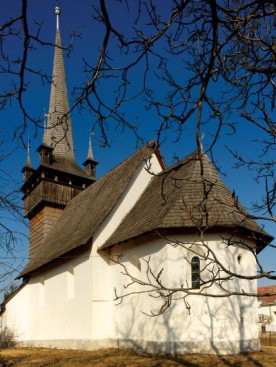The Calvinist Church – ChetfalvaChetfalva is located on the right banks of the river Tisza, and was mentioned in documents for the first time in 1341. No written sources specify the period when its church was built. However, regarding its layout, the original, medieval form has been preserved. The entire church was built in a single period, probably in the 15th century. Its sanctuary is enclosed by five sides of an octagon, its nave is 7.5 metres long and 5.5 metres wide. The sacristy was demolished. The western portal is spanned by a lancet arch. Two windows spanned by lancet arches provide light to the nave. In the 18th century, these windows were probably made larger as compared to their initial sizes. The frontispiece was painted in the Middle Ages, proof of this fact has been found during restoration works. On the inside, in the northern wall of the nave, a small tabernacle spanned by an ogee arch was discovered. Another tabernacle with richly articulated framing was found in the sanctuary’s northern wall. These stone details and remains were put on display as part of an exhibition inside the church. The painted wooden ceiling and all the other elements pertaining to it stem from the Reformation period and are the work of Ferenc Lándor Asztalos. He is the artist who made the wooden ceiling of the Calvinist church in Tákos, too. On the northern and the western sides of the nave, there are painted wooden galleries. The pulpit and its richly decorated canopy are also interesting. |













